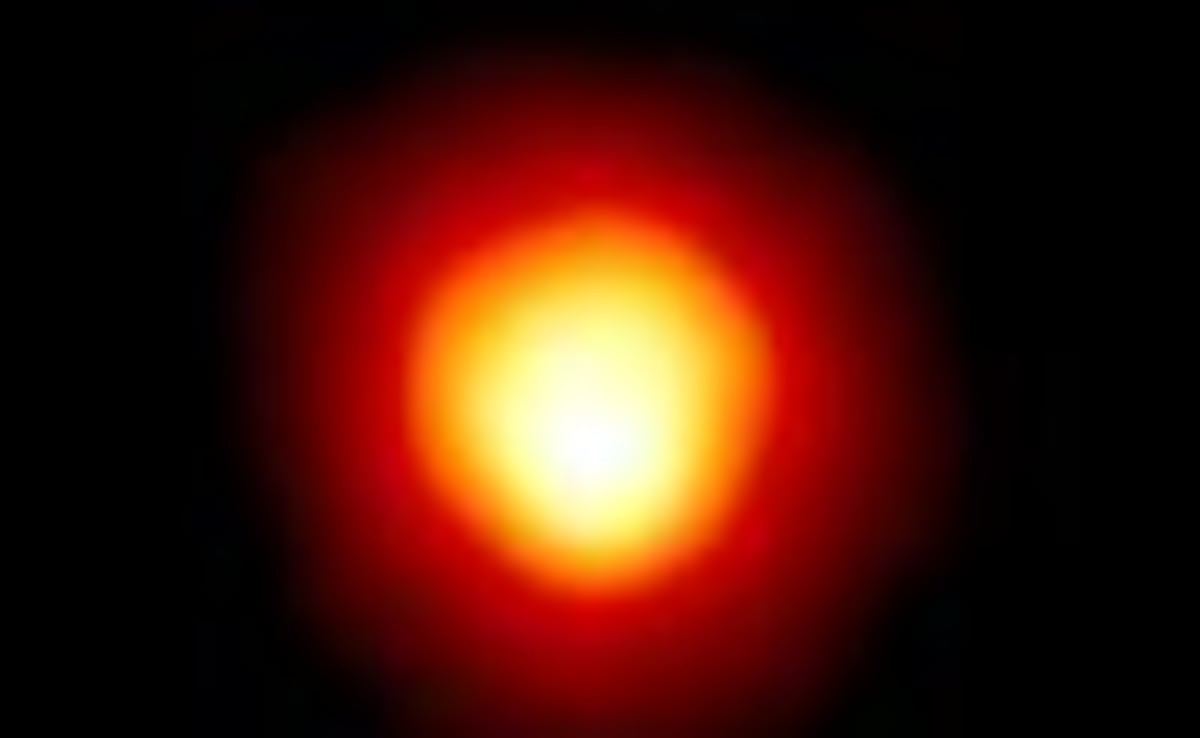
Betelgeuse will nearly disappear for a duration of 7 to 12 seconds.
Astronomers predict there will be a historic “once-in-a-lifetime” event that will cause Betelgeuse, one of the brightest and biggest stars that is visible from Earth, to momentarily vanish on Monday and earlt Tuesday. As asteroid Leona passes in front of the well-known star, skywatchers in central Asia’s Tajikistan and Armenia, Turkey, Greece, Italy and Spain, Miami, Florida and parts of Mexico, will be able to witness Betelgeuse become fainter and nearly disappear for a duration of 7 to 12 seconds, as per a report in the Independent.
The event is predicted to peak in Florida, US, at approximately 8:24:54 pm local time on December 11, while the midpoint will occur in Cordoba, Spain, at roughly 2:15:45 am local time on December 12.
Betelgeuse is a red supergiant star located in the constellation Orion. The space rock in question is 319 Leona, an oblong asteroid in the main asteroid belt between Mars and Jupiter that rotates slowly.
I’ve seen things you people wouldn’t believe…
An asteroid eclipsing the shoulder of Orion…The #asteroid (319) Leona will pass in front of the star Betelgeuse – the orange-red ‘shoulder’ of the constellation of Orion – shortly after 02:00 CET, 12 December.
If skies are… pic.twitter.com/gxEmIzMbjL
— ESA Operations (@esaoperations) December 11, 2023
The star has become prominent for its “fluctuating brightness”. Several scientists have also raised concerns that it could explode soon. Even though further observations showed that the star is far away from such an end, scientists are still attempting to determine Betelgeuse’s precise size and other characteristics.
An asteroid of this size crossing in front of a star is extremely uncommon and only observable from Earth once every few decades, according to researchers. They suggest that the unusual occurrence would present a chance to learn new details about Betelgeuse and the asteroid, such as its size and the motion of charged gas around the dying star.
“For a very short time, we will see the legendary Orion constellation without its famous, orange shoulder, as it will be in the distant future, once Betelgeuse will have exploded as a supernova and faded to black,” to the Virtual Telescope Project said, which will provide a live webcast from Italy, as per CBS News.
Betelgeuse is around 700 times larger and thousands of times brighter than the sun. NASA claims that it is so massive that it would extend past Jupiter if it were to take the place of our sun. However, the star is far younger than the sun, which is 4.6 billion years old, at only 10 million years old. Given its mass and the rate at which it is burning up its material, scientists anticipate that Betelgeuse will not last long.
In 2019, Betelgeuse saw a sharp decrease in brightness following innumerable years of fluctuating brightness due to the massive expulsion of surface material into space. According to NASA, the ensuing dust cloud momentarily obstructed the starlight, and after six months, Betelgeuse regained its previous brightness.




